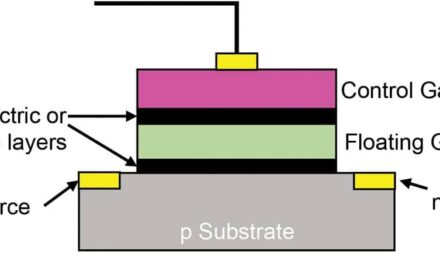Will medical devices and IT networks ever communicate? Urban legend has it that we will soon have seamless connections between clinical data and IT networks. Our author suggests that some obstacles may delay the attainment of that goal.

In June 2003, I made a presentation on the status of this great legend at the midyear educational conference of the Hospital Information Management Systems Society (HIMSS). I can tell you that the legend is alive and well.
My presentation was in the Emerging Technologies track and was titled “Convergence of Medical Device Technologies With IT.” The premier society of hospital information systems realizes that, although it appears that medical technology is now computer driven, there is still a critical gap between clinical data and the information systems to which these data are being provided.
The basis of this legend, like all urban legends, is almost believable, and you might think that you have heard it before from a reliable source, and, therefore, it must be true. Since standing on my soapbox at HIMSS and again in the Soapbox column in the September 2003 issue of 24×7, I have been searching for the truth.
In December 2003, I spent 4 days at the 90th Scientific Assembly and Annual Meeting of the Radiological Society of North America (RSNA) examining the interaction of all the various modalities of medical imaging with the PACS, (picture archiving and communication system) vendor. Then I looked at the interface of the PACS networks to HIS. In February 2004, I spent 4 days at the HIMSS annual conference examining the interaction of HIS with the EMR. At both meetings, I found it is the integrated health care enterprise that is purported to be the connector that ties the individual to the modality, to the record, and back to the individual.
A Brief History of Medical Device Connectivity
In 1983, the three great lies in health care were: radiology will be filmless in 3 years; health care will be paperless in 5 years; and the US Food and Drug Administration (FDA) will approve our product in 90 days. The filmless part of the legend came from the introduction of digital subtraction angiography (DSA), a new computer graphic function that had just become available. In radiology, it was thought that DSA would eliminate all the background images and leave a clean, beautiful image of just the dye injection. I am sure that was true in cadaver studies, but in patients that were still breathing, motion artifact was greater than most of the dye motions.
The paperless part of the legend came with the availability of low-cost hard disk drives. Some facilities developed a plan whereby all patients would have their own hard drives on the HIS network for filing all procedures, reports, and bills. Then, when the patients were discharged, billing offices could just print the final bills from the drive and archive the information on CD Roms until the patients’ return. This plan was not successful due to low reliability, but then CD Juke Box was developed, with better results.
No one could even explain how the FDA reviewed and approved new products.
In 1993, the three great lies in health care were: PACS will make us filmless; the EMR will make us paperless; and FDA approval will ensure that EMRs interface with other medical equipment. This was the beginning of the convergence of medical data and the EMR. The problem was that PACS and EMRs spoke different languages and needed different information. PACS needed digital imaging and communications in medicine (DICOM) information for defining the image, and for ascertaining where it was made, how it was made, and who made it. The EMR needed Hospital Language Version 7 to know what the image was and where to put it. No one at the FDA had a financial stake in making sure equipment would interface, so it was not an item of evaluation.
In 2003, there were three great lies in health care: this equipment is fully compliant with DICOM standards; this system is fully Health Level 7 (HL7)-compliant; and FDA approval assures compliance. This will continue to be an urban legend until there is a true financial advantage to the vendors to make information transfer transparent in health care like it is in banking and travel.
In 2013, the three great lies in health care will be: you will not need a laser camera for this imaging equipment; you will not need a laser printer on this computer network; and FDA approval assures compliance with the Health Insurance Portability and Accountability Act of 1996 (HIPAA). It appears that HIPAA would be the driving force to finally protect the patient chart in an electronic mode only. But in the time of wild hackers, identity theft, and worldwide network virus, EMR may be a concept whose time might never come.
The Devil Is in the Domain
So what is so difficult about making clinical computer systems provide information systems with data? The difficulty seems to be in expressing data from the clinical domain in an information domain. Patient monitoring in the clinical domain is composed of electrocardiogram waveforms and blood-pressure traces. When we try to transpose this continuous visual information into the information domain, we end up with only fixed data points, like heart rate and systolic/diastolic and mean blood pressure in a database file. The result is a one-finger piano rendition of a full concert score. In patient monitoring, the medical record will have to support “full-disclosure” monitoring before we will have a true EMR.
In medical imaging, computed tomography (CT), magnetic resonance imaging, nuclear medicine, positron emission tomography, and ultrasound images are all clinical-domain products. The transposition to the information domain results in calculations of percentage of vessel occlusion, flow rates, and tumor volume. If a picture is worth a thousand words, it should take an entire book—not an 80-word interpretation—to describe a 500-image study from a new 16-slice CT scanner. The resulting screens of 16 slices lined up like bread from a loaf is like taking the Mona Lisa as a continuous color masterpiece, digitizing it into a 256-X-256 pixel screen image with a 16-color pallet and trying to describe the smile to someone. The relevant detail is gone.
Laboratories have the same problems. Technicians take one sample of blood and ask, “What do you want to know about it?” In the clinical-analysis world, they would automatically do an analysis and tell you everything they could find out about it. Just because the sample was provided to determine oxygenation does not mean the coagulation, cardiac enzymes, pregnancy test, and DNA analysis for preventive and predictive medicine shouldn’t be provided at the same time.
In our biomedical service and support area we have spent years developing equipment records that work in a clinical domain. We identify equipment by application, age, and technical performance. When equipment history becomes asset management and is transposed into the information domain, all we get is ownership demographics and an automated reminder of the date on which we need to locate it again for testing or service. We lose data on clinical applications, amount of utilization, and appropriate training for users. We should have “flight-data” recorders in all equipment that can provide us with a complete functional history if and when we need it. The technology is available, but the vision to make it automatic is lacking.
If clinical data are ever going to converge with information data and become a transparent transaction, we are going to have to use the information technology to improve, not restrict, the clinical data. For 30 years, telemetry central stations have required a trained monitor technician to interpret the electrocardiogram waveforms and separate noise artifacts from life-threatening arrhythmias. The growing utilization of combined ECG and SaO2 telemetry can allow computer interpretation systems to track both oxygen saturation and arrhythmia detection for an automated and transparent analysis in clinical decisions. If the ECG appears to be changing dramatically, but the oxygen saturation is not changing, an information alarm can be initiated to request that the caregiver check the ECG electrodes and patient wires. If the automated monitoring program detects a steady reduction in oxygen saturation, it can inform the caregiver and increase the sensitivity in the ECG analysis. The goal of an automated telemetry monitor should be to identify every cardiac arrest 2 minutes before it happens rather than 2 seconds after it happens. The next step will be to determine the patient’s location and notify members of the arrest team closest to the patient without monitoring staff interaction.
We will put to rest the urban legend of health care automation when we monitor every patient—from admission to discharge—with smart analysis that does not require extra staffing. We will need a flight-data recorder for the patient record that allows us to provide the best care and achieve the best clinical outcome at the least cost with the best staff. We need an EMR that is as graphically accurate, user friendly, rapidly responsive, and crash proof as my son’s Game Boy SP™, with the same ability to upgrade to new software, connect to other systems, and be replaced for under $100 when it is obsolete in 2 years. Now that my son has interfaced his 3-inch Game Boy SP to my 50-inch plasma display TV, I see that convergence of the 1983 Pac-Man video game at the Pizza Palace and my 1983 cable-ready TV is possible. All it takes is the vision.
C. Wayne Hibbs, CCE, is president of health care consulting firm Hibbs & Associates, Dallas.




